I have to be able to set a random location for a waypoint for a flight sim. The maths challenge is straightforward:
"To find a single random location within a quadrangle, where there's an equal chance of the point being at any location."
Visually like this:

An example ABCD quadrangle is: A:[21417.78 37105.97] B:[38197.32 24009.74] C:[1364.19 2455.54] D:[1227.77 37378.81]
Thanks in advance for any help you can provide. :-)
EDIT Thanks all for your replies. I'll be taking a look at this at the weekend and will award the accepted answer then. BTW I should have mentioned that the quadrangle can be CONVEX OR CONCAVE. Sry 'bout dat.

